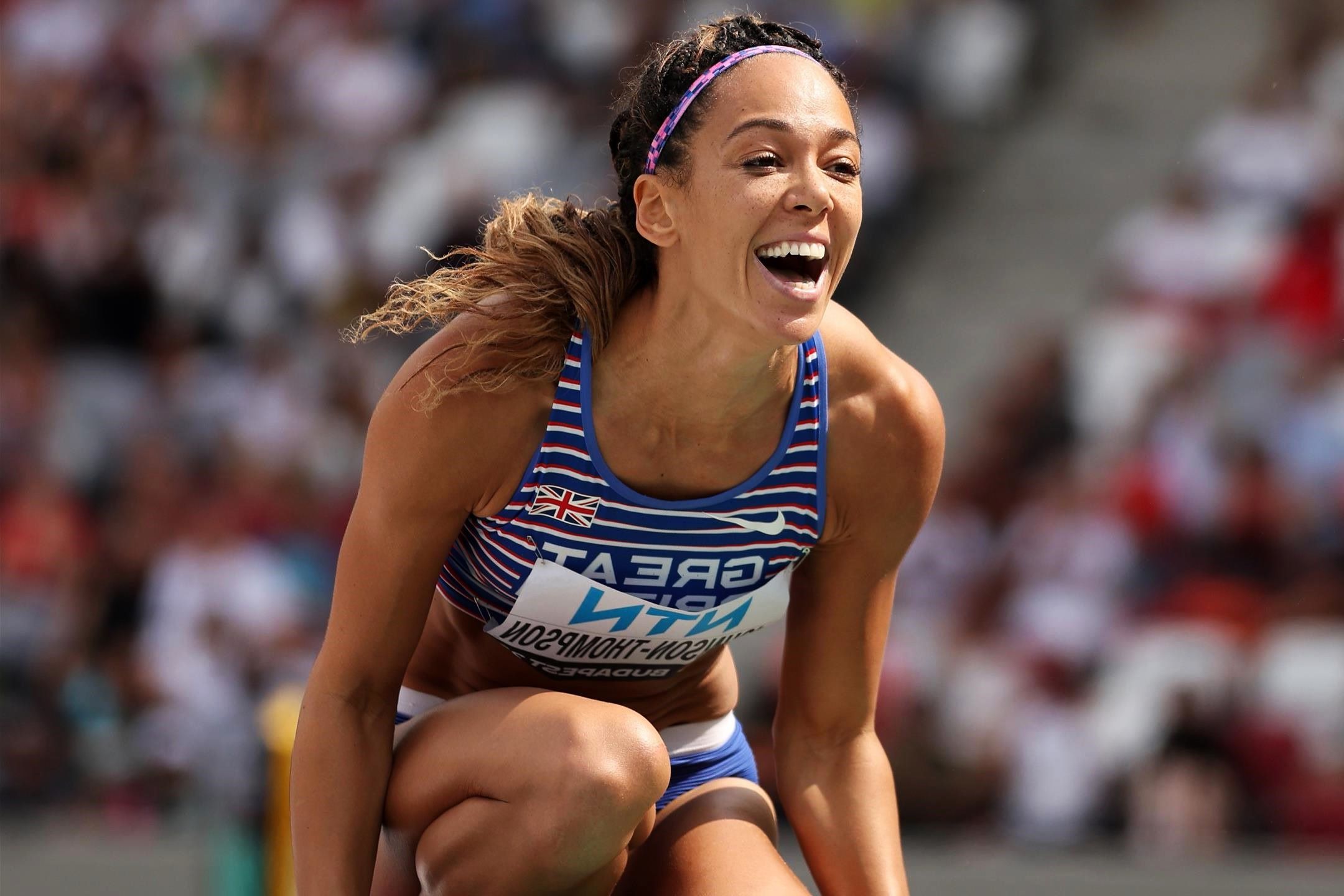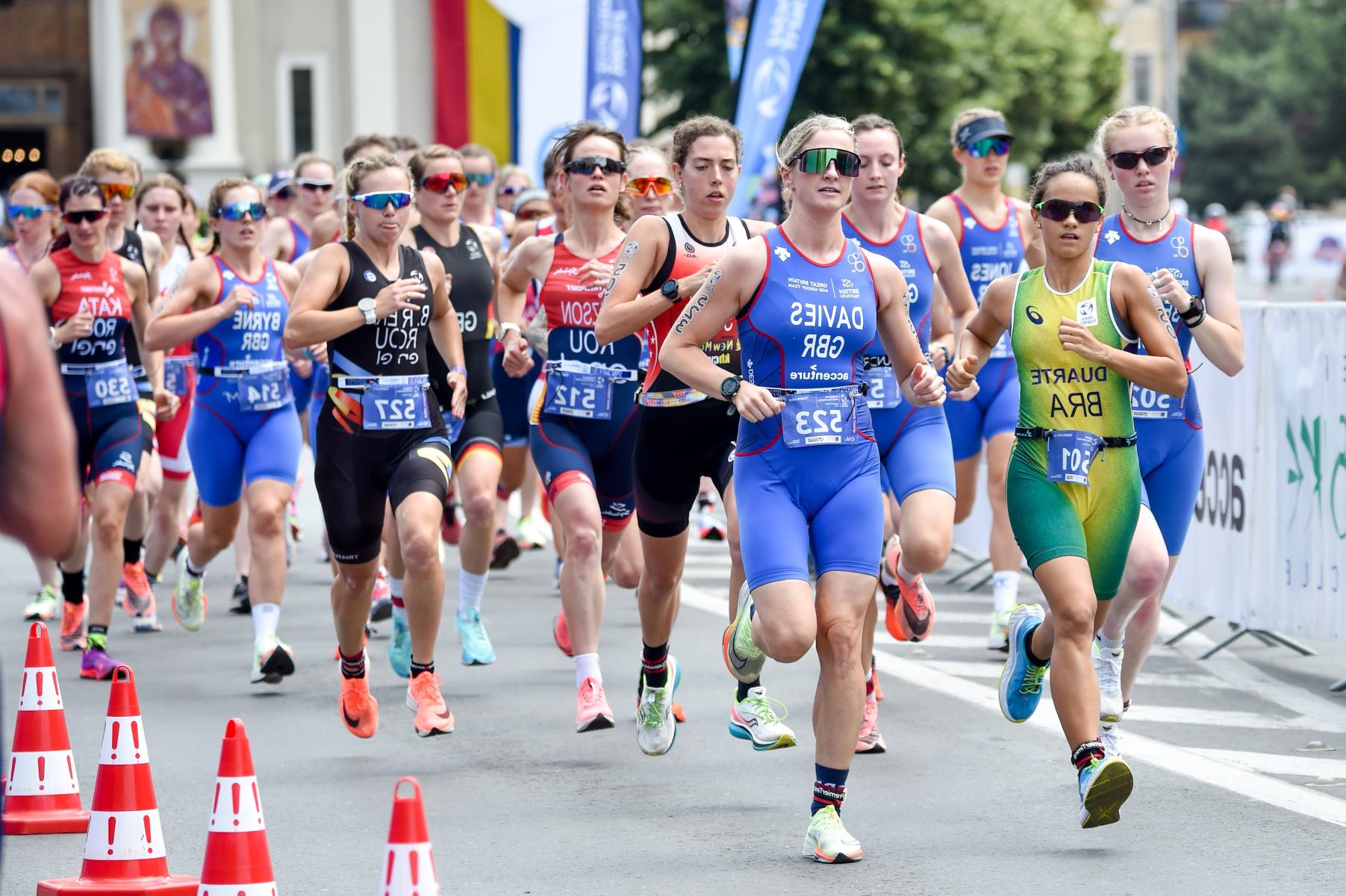Home>Health & Nutrition>The Impact Of Running On Athletes’ Blood Pressure


Health & Nutrition
The Impact Of Running On Athletes’ Blood Pressure
Published: February 21, 2024
Discover the effects of running on athletes' blood pressure and learn how it contributes to their overall health and nutrition. Explore the impact of physical activity on maintaining a healthy lifestyle.
(Many of the links in this article redirect to a specific reviewed product. Your purchase of these products through affiliate links helps to generate commission for Therunningadvisor.com, at no extra cost. Learn more)
Table of Contents
Introduction
Engaging in physical activity is a cornerstone of a healthy lifestyle, and for athletes, the impact of exercise on various aspects of health is of paramount importance. Among the many physiological factors that can be influenced by physical activity, blood pressure stands out as a critical indicator of cardiovascular health. As athletes strive to optimize their performance and overall well-being, understanding the relationship between exercise, particularly running, and blood pressure becomes essential.
In this article, we will delve into the intricate connection between running and blood pressure among athletes. We will explore the potential benefits of running on blood pressure, the underlying mechanisms that drive these effects, and the factors that can modulate the impact of running on athletes' blood pressure. By gaining insights into these aspects, athletes can make informed decisions to harness the potential of running as a tool for maintaining optimal blood pressure levels and overall cardiovascular health.
The journey to uncover the impact of running on athletes' blood pressure begins with a comprehensive understanding of blood pressure itself. By delving into the intricacies of this vital physiological parameter, we can appreciate the significance of maintaining it within the optimal range for athletes. Subsequently, we will explore the benefits of running for athletes, shedding light on the multifaceted advantages that this form of exercise offers beyond its impact on blood pressure. This will set the stage for a deeper exploration of the relationship between running and blood pressure, elucidating the mechanisms through which running can influence this vital aspect of cardiovascular health.
Furthermore, we will examine the various factors that can influence the impact of running on athletes' blood pressure. By recognizing these determinants, athletes can tailor their running regimens to maximize the cardiovascular benefits while mitigating potential risks. Finally, we will provide practical recommendations for athletes, empowering them to leverage the potential of running to optimize their blood pressure and overall cardiovascular well-being.
As we embark on this exploration, it becomes evident that the impact of running on athletes' blood pressure is a multifaceted and dynamic phenomenon, influenced by a myriad of factors. By unraveling the complexities of this relationship, athletes can harness the power of running to not only enhance their performance but also safeguard their cardiovascular health.
Read more: The Impact Of Running On Meniscal Cysts
Understanding Blood Pressure
Blood pressure is a fundamental physiological parameter that reflects the force exerted by circulating blood against the walls of the arteries. It is expressed as two values: systolic pressure, which represents the force when the heart contracts and pumps blood into the arteries, and diastolic pressure, which signifies the pressure when the heart relaxes between beats. Typically measured in millimeters of mercury (mmHg), blood pressure is a critical indicator of cardiovascular health and function.
Maintaining optimal blood pressure levels is essential for overall well-being, as it directly influences the heart's workload and the efficiency of blood circulation throughout the body. Elevated blood pressure, known as hypertension, can impose excessive strain on the arteries and the heart, increasing the risk of cardiovascular diseases such as heart attack, stroke, and heart failure. Conversely, low blood pressure, or hypotension, can lead to inadequate blood flow to vital organs, potentially causing dizziness, fainting, or shock.
For athletes, understanding blood pressure is particularly significant, as it directly impacts their cardiovascular performance and overall health. During exercise, the body's demand for oxygen and nutrients increases, necessitating adjustments in blood pressure to ensure adequate delivery to working muscles and organs. The ability to regulate blood pressure effectively is crucial for optimizing athletic performance and minimizing the risk of cardiovascular complications during intense physical exertion.
In the context of athletic endeavors, monitoring blood pressure serves as a valuable tool for assessing cardiovascular fitness and identifying potential health risks. By comprehending the dynamics of blood pressure, athletes can proactively manage this vital physiological parameter, thereby enhancing their athletic prowess and safeguarding their long-term cardiovascular well-being.
In essence, understanding blood pressure empowers athletes to appreciate the intricate interplay between cardiovascular function and physical activity. By recognizing the significance of maintaining optimal blood pressure levels, athletes can make informed decisions regarding their training regimens, lifestyle choices, and overall health management. This foundational knowledge sets the stage for exploring the impact of running on athletes' blood pressure, shedding light on the potential benefits and implications of this form of exercise on cardiovascular health.
The Benefits of Running for Athletes
Running offers a myriad of benefits for athletes, transcending its role as a mere form of physical exercise. From enhancing cardiovascular endurance to fostering mental resilience, the advantages of running extend far beyond the realm of athletic performance. For athletes, integrating running into their training regimens can yield profound physiological, psychological, and performance-related benefits.
1. Cardiovascular Health
One of the primary benefits of running for athletes lies in its profound impact on cardiovascular health. Engaging in regular running sessions can bolster heart function, improve circulation, and enhance the efficiency of oxygen delivery to working muscles. Over time, this can lead to a lower resting heart rate, increased stroke volume, and improved overall cardiovascular endurance. By fortifying the heart and circulatory system, running equips athletes with the physiological foundation to excel in their respective sports and withstand the rigors of intense physical exertion.
2. Physical Conditioning
Running serves as a potent tool for enhancing overall physical conditioning. It engages multiple muscle groups, including the quadriceps, hamstrings, calves, and core muscles, fostering strength, endurance, and agility. The repetitive nature of running also contributes to improved joint stability and bone density, reducing the risk of musculoskeletal injuries. Additionally, the calorie-burning potential of running can aid athletes in managing body weight and composition, further optimizing their physical conditioning for peak performance.
Read more: The Impact Of Covid On Running
3. Mental Resilience
Beyond its physical benefits, running plays a pivotal role in cultivating mental resilience and fortitude among athletes. Endurance running, in particular, challenges individuals to push beyond perceived limits, fostering mental toughness, discipline, and determination. The mental fortitude developed through running can translate into enhanced focus, perseverance, and resilience in the face of adversity during athletic competitions, training sessions, and other aspects of life.
4. Stress Reduction
Running serves as a powerful stress-relief mechanism for athletes, offering a cathartic outlet to alleviate mental and emotional strain. The rhythmic motion of running, coupled with the release of endorphins, can promote a sense of well-being, reduce anxiety, and enhance mood. This psychological benefit of running is particularly valuable for athletes, as it can help mitigate the pressures and demands inherent in competitive sports, training schedules, and performance expectations.
5. Performance Enhancement
Ultimately, the cumulative impact of the aforementioned benefits culminates in a tangible enhancement of athletic performance. By integrating running into their training routines, athletes can elevate their cardiovascular capacity, physical resilience, mental acuity, and overall readiness for competitive endeavors. Whether it involves sprinting, long-distance running, or interval training, the adaptability of running as a form of exercise enables athletes to tailor their regimens to specific performance goals, thereby optimizing their athletic prowess and competitive edge.
In essence, the benefits of running for athletes extend far beyond the physical realm, encompassing a holistic enhancement of cardiovascular health, physical conditioning, mental resilience, stress reduction, and performance optimization. By embracing running as a cornerstone of their training and lifestyle, athletes can harness its transformative potential to elevate their athletic capabilities and overall well-being.
The Relationship Between Running and Blood Pressure
The relationship between running and blood pressure is a dynamic interplay that holds profound implications for athletes' cardiovascular health. Engaging in regular running has been associated with notable effects on blood pressure, offering a potential avenue for optimizing this critical physiological parameter. As athletes lace up their running shoes and embark on their training journeys, the intricate mechanisms underlying the relationship between running and blood pressure come into play, shaping the cardiovascular landscape in profound ways.
Running serves as a catalyst for a series of physiological adaptations that can influence blood pressure dynamics. During a running session, the body undergoes a surge in oxygen demand, prompting the heart to pump blood more vigorously to meet the heightened metabolic needs of working muscles. This increased cardiac output, coupled with the dilation of peripheral blood vessels, facilitates efficient oxygen delivery and nutrient transport, thereby contributing to a transient rise in blood pressure during exercise. However, this acute elevation in blood pressure is a natural and adaptive response to the demands imposed by physical exertion, serving to optimize oxygen delivery and metabolic efficiency.
Beyond the immediate effects observed during running, the cumulative impact of regular aerobic exercise, such as running, can exert lasting benefits on blood pressure regulation. Long-term engagement in running has been linked to improvements in endothelial function, arterial compliance, and overall vascular health, all of which play pivotal roles in modulating blood pressure. Additionally, the reduction of systemic inflammation and oxidative stress, coupled with favorable alterations in lipid profiles, further contribute to the cardiovascular benefits conferred by running, thereby influencing blood pressure regulation.
Moreover, the impact of running on blood pressure extends beyond the physical realm, encompassing psychological and stress-related factors. Running serves as a potent stress-relief mechanism, offering athletes a means to mitigate the psychological burdens that can contribute to elevated blood pressure. By promoting relaxation, reducing anxiety, and enhancing overall mental well-being, running can indirectly influence blood pressure dynamics through its stress-reducing effects.
In essence, the relationship between running and blood pressure is a multifaceted interplay shaped by acute physiological responses, chronic cardiovascular adaptations, and psychological influences. By recognizing the intricate mechanisms through which running can influence blood pressure, athletes can harness the potential of this form of exercise to optimize their cardiovascular health and overall well-being. As athletes continue to embrace running as a cornerstone of their training regimens, the profound relationship between running and blood pressure underscores the transformative impact of physical activity on cardiovascular function.
Factors That Can Influence the Impact of Running on Blood Pressure
The impact of running on blood pressure is influenced by a myriad of factors, encompassing physiological, environmental, and individual determinants that collectively shape the cardiovascular response to this form of exercise. By recognizing these influential factors, athletes can gain insights into the nuanced interplay between running and blood pressure, thereby optimizing the cardiovascular benefits while mitigating potential risks.
-
Intensity and Duration of Running: The intensity and duration of running sessions exert a significant influence on blood pressure dynamics. High-intensity running, such as sprinting or interval training, can lead to acute spikes in blood pressure during exertion, followed by rapid declines post-exercise. In contrast, moderate-intensity and long-duration running, such as steady-state aerobic workouts, may elicit more gradual and sustained changes in blood pressure. Athletes must consider the balance between the cardiovascular benefits and the potential transient elevations in blood pressure associated with varying intensities and durations of running.
-
Hydration Status: Adequate hydration is crucial for maintaining optimal blood pressure regulation during running. Dehydration can lead to a reduction in blood volume, thereby causing the heart to work harder to maintain adequate circulation. This can result in a temporary increase in blood pressure. Conversely, overhydration can dilute electrolyte levels, potentially impacting blood pressure regulation. Athletes must strive to maintain proper hydration levels before, during, and after running to support cardiovascular function.
-
Environmental Conditions: Environmental factors, such as temperature, humidity, and altitude, can influence the impact of running on blood pressure. Exercising in hot and humid conditions can lead to increased sweat loss and potential dehydration, impacting blood pressure regulation. Similarly, running at higher altitudes can pose challenges to cardiovascular function due to reduced oxygen availability, potentially affecting blood pressure responses. Athletes should adapt their running strategies to accommodate environmental conditions and mitigate potential impacts on blood pressure.
-
Individual Variability: Each athlete exhibits unique physiological responses to running, influenced by factors such as age, fitness level, genetics, and underlying health conditions. Age-related changes in blood vessel elasticity, variations in baseline blood pressure, genetic predispositions, and pre-existing cardiovascular conditions can all modulate the impact of running on blood pressure. Athletes must consider their individual characteristics and health status when evaluating the effects of running on blood pressure.
-
Recovery and Rest: The interplay between running and blood pressure extends beyond the exercise session itself. The post-exercise recovery phase, including rest, nutrition, and sleep, plays a crucial role in blood pressure regulation. Inadequate recovery and chronic sleep deprivation can contribute to elevated blood pressure, potentially offsetting the cardiovascular benefits of running. Athletes should prioritize adequate rest and recovery strategies to optimize blood pressure regulation in the aftermath of running sessions.
By recognizing and navigating these influential factors, athletes can harness the potential of running to optimize their cardiovascular health while mitigating potential impacts on blood pressure. The interplay between running and blood pressure underscores the dynamic nature of cardiovascular responses to exercise, highlighting the importance of tailored approaches to maximize the benefits of running for athletes' overall well-being.
Recommendations for Athletes
-
Individualized Training Plans: Athletes should work with qualified coaches or trainers to develop individualized training plans that incorporate running as a key component. These plans should consider the athlete's current fitness level, performance goals, and any existing health conditions to optimize the cardiovascular benefits of running while minimizing potential risks.
-
Gradual Progression: It is essential for athletes to approach running with a mindset of gradual progression. Incrementally increasing the intensity, duration, and frequency of running sessions allows the body to adapt to the cardiovascular demands, reducing the likelihood of abrupt spikes in blood pressure and promoting sustainable improvements in cardiovascular health.
-
Monitoring and Tracking: Regular monitoring of blood pressure, both at rest and during exercise, can provide valuable insights into the impact of running on cardiovascular health. Athletes should consider incorporating blood pressure measurements into their training routines, enabling them to assess their physiological responses to running and make informed adjustments as needed.
-
Hydration and Electrolyte Balance: Maintaining optimal hydration and electrolyte balance is crucial for supporting blood pressure regulation during running. Athletes should prioritize adequate fluid intake before, during, and after running sessions, particularly in challenging environmental conditions, to sustain cardiovascular function and mitigate potential fluctuations in blood pressure.
-
Recovery Strategies: Implementing effective post-exercise recovery strategies, including adequate rest, nutrition, and sleep, is paramount for optimizing blood pressure regulation. Athletes should prioritize sufficient recovery time between running sessions to allow for physiological adaptations and minimize the risk of elevated blood pressure associated with inadequate rest.
-
Health Monitoring: Athletes should prioritize regular health check-ups to assess cardiovascular health and identify any underlying conditions that may impact the relationship between running and blood pressure. By staying proactive in monitoring their overall health, athletes can address potential risk factors and optimize the cardiovascular benefits of running.
-
Consultation with Healthcare Professionals: Athletes with pre-existing cardiovascular conditions or other health concerns should seek guidance from healthcare professionals, such as cardiologists or sports medicine specialists, to ensure that their running regimens align with their individual health needs. This collaborative approach can help athletes navigate potential risks and optimize the cardiovascular benefits of running.
By embracing these recommendations, athletes can harness the potential of running to optimize their cardiovascular health and overall well-being, thereby elevating their athletic performance and long-term health outcomes. The proactive integration of these strategies empowers athletes to leverage the transformative impact of running on blood pressure while navigating the complexities of cardiovascular responses to exercise.
Conclusion
In conclusion, the impact of running on athletes' blood pressure encompasses a multifaceted interplay shaped by acute physiological responses, chronic cardiovascular adaptations, and psychological influences. The relationship between running and blood pressure holds profound implications for athletes' cardiovascular health, highlighting the transformative potential of this form of exercise in optimizing blood pressure regulation and overall well-being.
As athletes lace up their running shoes and embark on their training journeys, the intricate mechanisms underlying the relationship between running and blood pressure come into play, shaping the cardiovascular landscape in profound ways. The acute elevation in blood pressure during running, driven by the surge in oxygen demand and increased cardiac output, is a natural and adaptive response to the demands imposed by physical exertion. Furthermore, the cumulative impact of regular aerobic exercise, such as running, has been linked to lasting benefits on blood pressure regulation, including improvements in endothelial function, arterial compliance, and overall vascular health.
However, the impact of running on blood pressure is influenced by a myriad of factors, including the intensity and duration of running, hydration status, environmental conditions, individual variability, and post-exercise recovery. By recognizing and navigating these influential factors, athletes can optimize the cardiovascular benefits of running while mitigating potential impacts on blood pressure, thereby enhancing their athletic performance and overall well-being.
Practical recommendations for athletes include the development of individualized training plans, gradual progression in running intensity, monitoring and tracking of blood pressure, prioritization of hydration and electrolyte balance, implementation of effective recovery strategies, regular health monitoring, and consultation with healthcare professionals, particularly for athletes with pre-existing cardiovascular conditions or health concerns.
By embracing these recommendations and gaining insights into the nuanced interplay between running and blood pressure, athletes can harness the potential of running to optimize their cardiovascular health and overall well-being. The proactive integration of these strategies empowers athletes to leverage the transformative impact of running on blood pressure while navigating the complexities of cardiovascular responses to exercise.
In essence, the impact of running on athletes' blood pressure transcends the realm of physical exercise, encompassing a holistic enhancement of cardiovascular health and overall well-being. As athletes continue to embrace running as a cornerstone of their training regimens, the profound relationship between running and blood pressure underscores the transformative impact of physical activity on cardiovascular function, thereby shaping a path towards enhanced athletic performance and long-term health outcomes.














